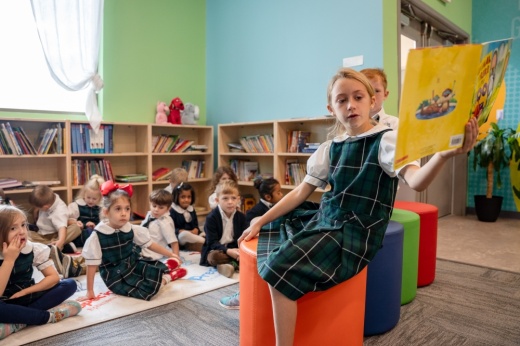School districts receive state funding based on attendance, making student enrollment an important factor as they face state financial hurdles. Simultaneously, declining enrollment data indicates many families feel districts are not meeting their needs.
The overview
Community Impact analyzed data from the Texas Education Agency, the U.S. Census Bureau and withdrawals from local school districts to learn where students are going. Overwhelmingly, data indicates families are choosing charter schools.
In the last decade, four charter schools opened in North Austin suburbs: Harmony and Idea public schools, BASIS Texas Charter Schools and Valor North Austin. Another Harmony campus is also under construction between Round Rock and Georgetown. These join the previously established Meridian World School and Gateway College Preparatory School.Transfer data from the TEA shows 19% of students enrolled in Pflugerville ISD in the 2022-23 school year left the district for charter or public schools in a different district.
New educational options are not limited to charter schools. New private schools, such as Crosslife Christian Academy in Pflugerville, and homeschooling groups have also been formed.
Census Bureau data shows that about 39,000 school-aged children live within PfISD’s boundaries. The district’s enrollment for the 2022-23 school year was 25,445, which means the district captured about 65% of possible students in the area. No Texas agency tracks private or homeschool students, but this data shows about 8,000 of those children are choosing one of these options.
Dana Martin chose to enroll her children at Goodwater Montessori, where she says her older son is thriving.
“How can you be testing so low, but so bored and not being challenged?” Martin said, referencing her child’s time in public school. “He wasn’t getting his needs met at all.”
By the numbers
Despite growth in the area population, enrollment for PfISD has remained largely unchanged, while the number of students leaving each year for charter schools has tripled.
PfISD saw the number of students leaving the district grow from 1,762 in the 2012-13 school year to 5,398 in the 2022-23 school year, while enrollment has only grown by around 2,000 students during the past 10 years.
Many neighboring districts, including Round Rock ISD, are seeing this trend. Hutto ISD is also seeing a larger percentage of children transferring out year-over-year; however, because of the district’s fast-growing population enrollment has continued to increase every year. Students at HISD grew from 5,754 to 9,620 in the last decade, while the number of students transferring out of the district entirely rose from 449 to 977.What it means
Families are enrolling their children in charter and private schools for a variety of reasons.
Sarah Gardner, director of community engagement for Meridian World School, said the charter school offers a smaller environment for students to enjoy many of the same opportunities they would have at a traditional public school.
Michelle Paul, Crosslife Christian Academy’s admissions director, and Daniel Cattau, Concordia High School’s head of school, both pointed to smaller classes and relationships between teachers and students as a main benefit of private schooling.
Bob Templeton—a demographer with Templeton Demographics, also known as Zonda Education, who works with many area districts—said that in compiling projections, he has observed a sharp increase in homeschooling.
“The charter expansion has been going on for all 10 years,” Templeton said. “Then we saw a surge of homeschooling that is a little harder to quantify because we don’t have the homeschool data.”
César Barroso, a parent with two children who live within PfISD’s boundaries, said one of his daughters attends Valor Public Schools, and he’s planning for his younger daughter to attend the charter school.
Part of the school’s appeal, he said, is its classical model and curriculum, which he said is in line with his values.
Driving decisions
Parents who spoke with Community Impact cited several reasons why they chose to transfer their students to alternative schools, including:
- Smaller class sizes
- Special programming
- Religious affiliation
“[Public schools] weren’t doing a really good job of teaching children how to think; they were teaching our children what to think,” said César Barroso, Valor Public Schools parent residing in PfISD.
Going forward
On a year-to-year basis, enrollment can impact many decisions made by school leaders, PfISD Chief Financial Officer Jennifer Land said. With enrollment stagnating and the cost of operations increasing, the district has used tax rate elections to fund pay raises, while state funding hurdles in the upcoming budget year present more challenges.
In HISD, Chief Financial Officer Caleb Steed said the $4.5 million in funding the district would have received for the 977 students that transferred out in 2022-23 would be somewhat offset by the cost of additional staff and resources needed for those students. However, it could have helped shrink the $6 million budget deficit for that year.
Having more students attend the campuses they are zoned for could bring additional dollars to PfISD, but Land said it would not solve cost pressures such as recapture, a mechanism that requires some Texas schools to pay a portion of their property tax revenue back to the state.
As HISD grows, Brittany Swanson, associate superintendent of instruction and innovation, said the district hopes to retain students by maintaining quality programming. Should the transfer rate stay at this pace, she said it could decrease some opportunities within the district.
“With every student that opts out of the public school experience, I think we would argue that they might be missing an opportunity and a well-rounded education in public school,” she said.





